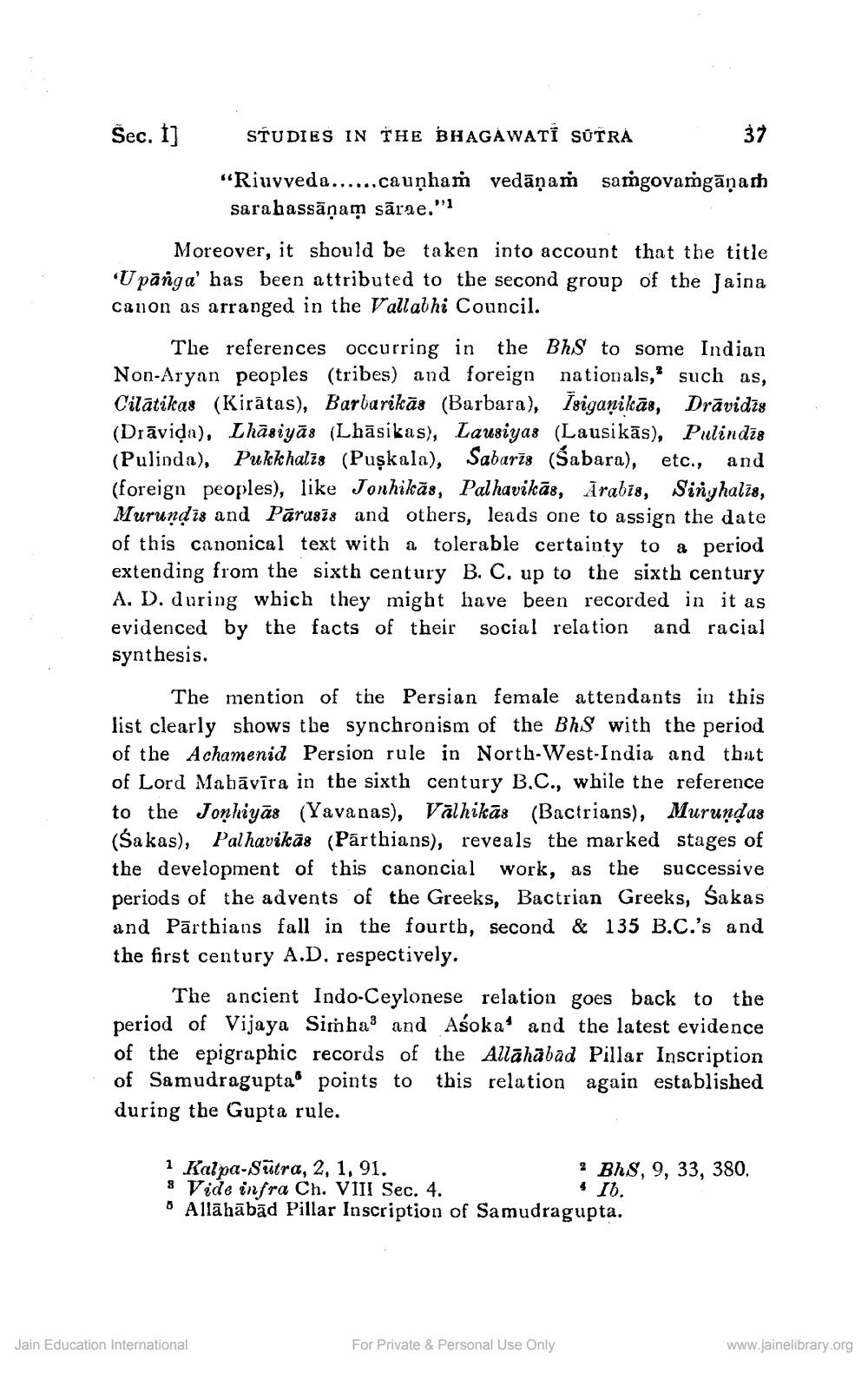________________
Sec. 1]
STUDIES IN THE BHAGAWATI SUTRA
"Riuvveda......cauṇham vedāņaṁ saṁgovaṁgāṇarh sarahassaṇam sārae."
Moreover, it should be taken into account that the title Upanga' has been attributed to the second group of the Jaina canon as arranged in the Vallabhi Council.
The references occurring in the BhS to some Indian Non-Aryan peoples (tribes) and foreign nationals, such as, Cilātikas (Kiratas), Barbarikās (Barbara), Isiganikās, Drāvidīs (Drāviḍa), Lhasiyās (Lhāsikas), Lausiyas (Lausikās), Pulindis (Pulinda), Pukkhalis (Puskala), Sabaris (Sabara), etc., and (foreign peoples), like Jonhikäs, Palhavikās, Arabis, Singhalis, Murundis and Pārasis and others, leads one to assign the date of this canonical text with a tolerable certainty to a period extending from the sixth century B. C. up to the sixth century A. D. during which they might have been recorded in it as evidenced by the facts of their social relation and racial synthesis.
The mention of the Persian female attendants in this list clearly shows the synchronism of the BhS with the period of the Achamenid Persion rule in North-West-India and that of Lord Mahāvīra in the sixth century B.C., while the reference to the Jonhiyas (Yavanas), Valhikās (Bactrians), Murundas (Sakas), Palhavikās (Parthians), reveals the marked stages of the development of this canoncial work, as the successive periods of the advents of the Greeks, Bactrian Greeks, Šakas and Parthians fall in the fourth, second & 135 B.C.'s and the first century A.D. respectively.
37
The ancient Indo-Ceylonese relation goes back to the period of Vijaya Simha and Aśoka and the latest evidence of the epigraphic records of the Allahabad Pillar Inscription of Samudragupta points to this relation again established during the Gupta rule.
1 Kalpa-Sutra, 2, 1, 91.
3 Vide infra Ch. VIII Sec. 4.
Allāhābād Pillar Inscription of Samudragupta.
Jain Education International
For Private & Personal Use Only
2 Bhs, 9, 33, 380. • Ib.
www.jainelibrary.org




